Onion Fly (Chortophila antiqua): [Characteristics, Detection, Effects and Treatment]
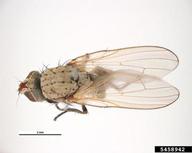
What is the onion fly?
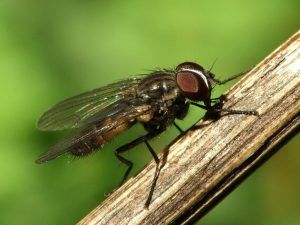 The onion fly, with the scientific name Chortophila antiqua, is a very persistent dipteran that tends to behave like a pest that causes great economic losses to intensive agriculture.
The onion fly, with the scientific name Chortophila antiqua, is a very persistent dipteran that tends to behave like a pest that causes great economic losses to intensive agriculture.
Its larvae are highly efficient, because they enter the onion bulbs until they cause irreversible damage, fulfilling their food role at a high cost: fungi and bacteria take advantage of the prevailing weakness and cause a deadly rot that ruins the harvest.
The work of the larvae is laborious, because they dig galleries until they reach their goal: to mine the bulb and then continue to live at the expense of the plant ‘s nutrients.
In general terms, when talking about onion flies, this covers many species of Diptera, where the most important of them is one very similar to the house fly: the so-called Phorbia antiqua or Delia antiqua, which has red eyes and a dark body. grayish.
These dipterans are also known by the name of «seed flies». Among the best known we have the following:
- Delia platura or Phorbia platura, identifiable by a brown line that crosses the dorsal area.
- Delia florilega or Phorbia florilega.
- Phorbia radicum, with three dark lines on the abdomen.
The most virulent season, with the greatest activity, is when very warm autumns and mild winters occur when there are no snowfalls. Thus, they can reproduce more easily so that several generations survive, about 3 or 3, a year.
How can we identify it?
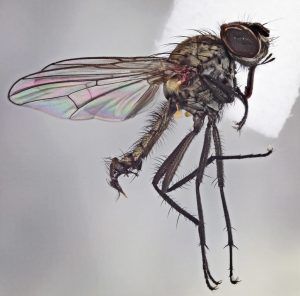 Plants affected by the invasion of this noxious pest have visible symptoms such as softening of their tissues, entry holes and general weakness.
Plants affected by the invasion of this noxious pest have visible symptoms such as softening of their tissues, entry holes and general weakness.
When this happens, there is no choice but to uproot the plant , to prevent the entire crop from becoming infected until it dies.
With the help of a sharp knife and a razor, we can open the interior of the bulb and observe the larvae, an unequivocal sign of the infestation caused by onion flies.
Let’s see some of the most outstanding characteristics of these dipterans.
- Onion flies are typically 5-7mm in length.
- Its adult appearance is yellowish in color with red eyes, very similar to the domestic fly that we all know.
- It usually appears in mid- spring and manages to lay its eggs in external leaf veins and on the neck of the host plant.
- Females also lay their clutches on the ground. Each one can contain between 100-200 eggs, cylindrical and bright white.
- The eggs hatch and many white larvae emerge, always seeking to enter the bulbs to extract nutrients, until they rot.
- The most dangerous attack of the species occurs due to the very aggressive action of the first generation, which destroys seedbeds and seedlings, as well as young specimens of the cultivar.
- They pupate in the soil after the larval stage is over, at a depth of about 15cm, but they also rarely do so inside a gallery of the infested plant.
- The pupae are ovoid and brown from which new flies will emerge that perpetuate the life cycle.
- They stop their evolution in the winter, until they come out when spring appears, when the temperature is already around 10ºC, which is when the new adults come out of the ground.
In the Delia antiqua species, the behavior of the larva is aggressive and as soon as it is born it penetrates the plant tissue to eat as much of the bulb as it can.The Delia radicum feeds on the roots of the plant and on the seeds in the process of germination is done by the Delia platura species.
What plants does the onion fly affect?
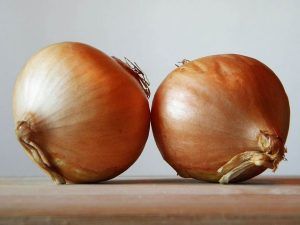 This fly prefers onion crops of all kinds. Attacks species of onions, tender, dry onions, chives.
This fly prefers onion crops of all kinds. Attacks species of onions, tender, dry onions, chives.
Therefore, all of them are exposed to a precise attack in the initial stages of the crops, with very strong damage when the insect is in the larval stage.
They destroy seeds and seedlings until they devastate the crop, causing a lot of damage in the seedling birth stage, which will not have the strength to withstand the onslaught of the larvae.
If they survive, then the growth will be very irregular, defective, achieving the weakening of the plant in the adult state, presenting a yellowish color in the foliage and a loss of turgidity, with evident delays in the growth process.
In the end, the bulbs will be rotten and the harvest will inevitably depreciate, because the wounds produced by the larvae in them give entry to fungi and bacteria that aggravate the situation, because they are the ones that generate the rotting condition of the fruits.
How to fight the onion fly?
There are several easy-to-follow preventive measures that help considerably to improve the defensive situation of these onion crops, which are certainly in high demand at a commercial level throughout the world. Let’s see.
- Those spontaneous liliaceae species that attract Diptera should be eliminated from the cultivar.
- It is also necessary to clean the surface of the land very well, freeing it from destroyed bulbs, which must be incinerated.
- It is also necessary to separate the cultivation of varieties sensitive to attacks for a year. That is, rotate crops, even 2 years or more between them.
- As it is difficult to get this fly out of the ground when it becomes a plague, it is very important to know the history of the land, to know if it has been the victim of insect invasions before.
- Another important measure is to carry out, before cultivation, a preventive disinfection treatment for larvae, to prevent them from attacking as soon as spring arrives.
- It is very beneficial to fertilize with nitrogen.
- Screening can be placed over the surface of the young crop to prevent them from flooding the plants to lay their eggs.
- It is also advisable to avoid feeding the soil with organic material, because they are highly desired by the female fly, which will place its enchanted spawn on decomposing remains.
- Crops that attract enemies of the onion fly should be used. For this, associations with carrots and garlic, cauliflower, broccoli, cabbage and cabbage are ideal.
What are the best products to eliminate the onion fly?
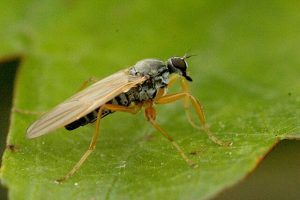 The ideal is to treat the affected land with pyrethrins or pyrethroids authorized for onion crops.
The ideal is to treat the affected land with pyrethrins or pyrethroids authorized for onion crops.
The application should be carried out directly on the bulbs, taking care that the amount of broth is sufficient to soak the insects in the form of pupae and adults that are hidden in the ground.
In any case, it is highly recommended to follow the instructions of the manufacturer of the product to make good prophylaxis.

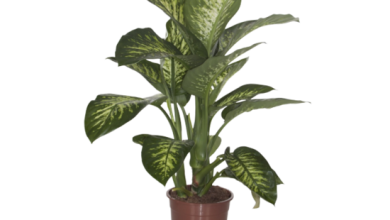
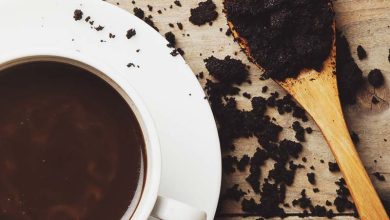
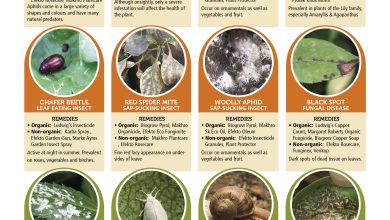
![Photo of How to Plant Cucumbers: [Cultivation, Substrate, Irrigation and Care]](https://www.complete-gardening.com/wp-content/uploads/2022/08/how-to-plant-cucumbers-cultivation-substrate-irrigation-and-care-390x220.jpg)